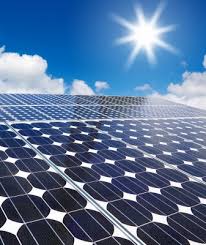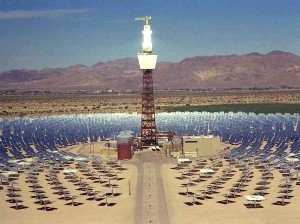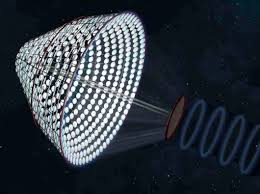Remember the Book “Megatrends: Ten New Directions Transforming Our Lives” (1988)? Well, Here’s a New, Transformative Direction.

 As is increasingly known, the price of solar panels has fallen dramatically over the past several years, both for general and hot water electric power generation. At the same time, the efficiency of panels has risen dramatically.
As is increasingly known, the price of solar panels has fallen dramatically over the past several years, both for general and hot water electric power generation. At the same time, the efficiency of panels has risen dramatically.
One solar panel available for purchase in 2011 was about $1.31/watt. Last year — about $.50/watt. The math? A 62% reduction. Deutsche Bank’s solar analyst Vishal Shah says this was due to lowered processing costs, polysilicon cost falling and improvement in DC/AC conversion efficiencies.
Shah forecasts that total costs could fall another 30-40% over the next several years. Much of this is anticipated through further commercial scaling in the residential markets and improved operating efficiencies.
So, solar energy’s getting way cheaper. Closing in if not already on par with fossil-fuel based, especially after the host of industry subsidies are considered.
Increasingly, people ask me about solar for their homes. Gone is the question “why,” replaced by questions surrounding “how to”.
But, there are millions of homes where solar through the grid is preferable to on-site. For one: rooftops shaded by mature tree foliage, common in older neighborhoods. For another, old roofs. (Still, every flippin’ Home Depot and Walmart, to name two big boxers, should have rooftop solar now or in their CIPs. Imagine the Depot selling it to its customers through Solar City, with Google as a major financial backer, but not itself?! I can’t.)
This solar energy megatrend is being further addressed in CA, India and China by the use of solar-energy-reflecting mirrors and steam generator transformers. These are referred to a concentrating solar projects (CSPs).

The world’s largest solar power plant, The Ivanpah Solar Electric Generating System (ISEGS) located on 3,500 acres in the Mohave Desert, has been operational since October 2013. Its major owners are NRG Energy, BrightSource Energy and Google.
 What is it? Essentially, it’s a huge array of mirrors which focus solar energy upon a boiler where water is vaporized as in a steam generator to drive turbines. ISEGS is 3 separate units strung together. In the image to the right, the boiler is atop the 459′ tower.
What is it? Essentially, it’s a huge array of mirrors which focus solar energy upon a boiler where water is vaporized as in a steam generator to drive turbines. ISEGS is 3 separate units strung together. In the image to the right, the boiler is atop the 459′ tower.
Scientific American had a feature on Ivanpah’s Mohave Desert installation back in 2013. Writer Dave Levitan states: “The world’s deserts receive more energy beamed down from the sun in six hours than humankind uses in a year.” Next sentence- “Or, try this one: Cover around 4 percent of all deserts with solar panels, and you generate enough electricity to power the world.” (Heh, I like those kind of crazy verbal illustrations.)
One caution Levitan describes is the effect of dust on the mirrors. They have to cleaned almost daily. Efficiency declines noticeably otherwise. Inherent challenges are a given when trying to harness and convert free energy. (I blogged a few weeks back about ocean wave energy harvesting.)
I’m envisioning sub-orbital or outer space applications of CSPs. But, that might lead to another kind of Star Wars — unless jointly sponsored by all developed nations of the world seeking to save rather than destabilize humankind through Machiavellian “who moved my cheese” contrivances?
…
Thanks, Mike, for seeding this blog topic. You’re a futurist with optimistic attitude. And thanks, Rick, for being such a trustworthy source of residential/commercial solar expertise.
